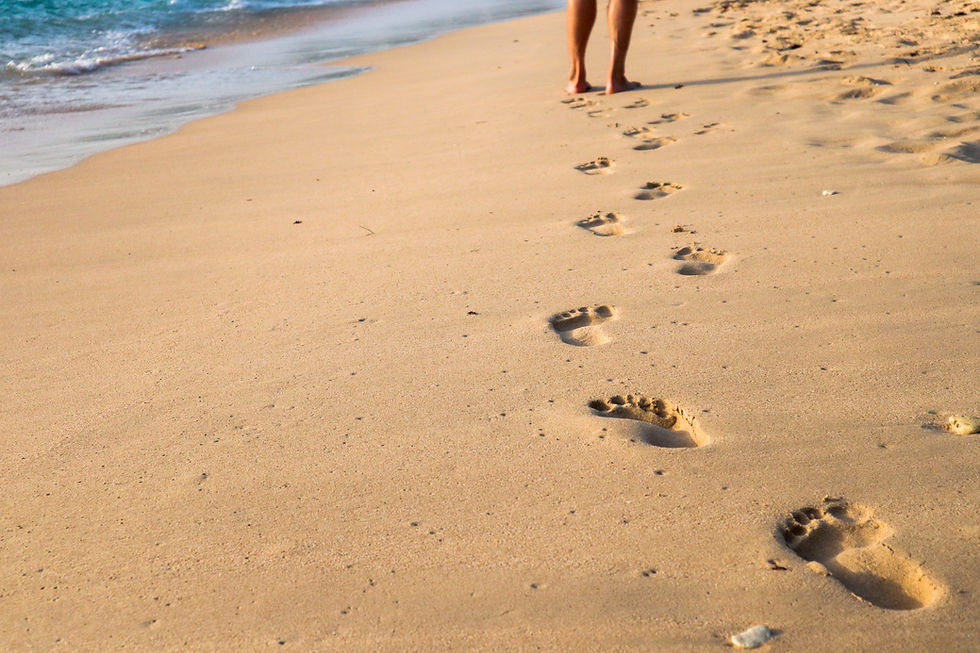
Walking barefoot plays many important roles in child development, especially on the
musculoskeletal and nervous systems. From a physical (musculoskeletal systems) standpoint, walking barefoot promotes natural development of the feet, a neutral stride for an even weight distribution, and encourages children to grip with their toes which plays a role in balance. Walking barefoot increases activation of the arches of the feet, which is important for shock absorption, strength, and balance. Walking barefoot also plays a role in the proper development of a child’s bones, ligaments, and muscles for increased joint stability. Research shows that spending time barefoot is correlated with a child having a decreased risk of foot deformities and injuries and promotes the development of strong jumping skills. 1,2
From a neurological (nervous system) standpoint, the tactile stimulation of walking barefoot
aids in sensory development. This is through the reception of multiple nerve endings in the
child’s feet that are exposed when barefoot which are able to transmit sensory information
back up to the brain. Walking barefoot enhances a child’s sense of body awareness and their
perception of the environment around them. Research shows that children who spend time
barefoot have better balance skills and proprioception when compared to children who
primarily spend time with shoes on. 3 There are numerous effects from walking barefoot that will benefit your child throughout their future. Encourage your child to spend some time barefoot each day for healthy development!
Reference List
1. Astrid Zech, Ranel Venter, Johanna E. de Villiers, Susanne Sehner, Karl Wegscheider,
Karsten Hollander. Motor Skills of Children and Adolescents Are Influenced by Growing
up Barefoot or Shod. Frontiers in Pediatrics. 2018;6. doi:10.3389/fped.2018.00115.
2. Hollander K, de Villiers JE, Sehner S, et al. Growing-up (habitually) barefoot influences
the development of foot and arch morphology in children and adolescents. Scientific
reports. 2017;7(1):8079. doi:10.1038/s41598-017-07868-4.
3. Footwear habits influence child and adolescent motor skill development. NewsRx
Health. http://search.ebscohost.com/login.aspxdirect=true&db=edsgao&AN=edsgcl.547300974&site=eds-live. Published 2018. Accessed June 28, 2020.

Comments